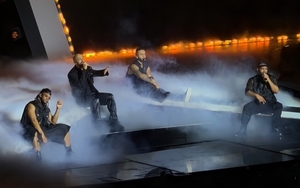DRAGONS chasing dragons, drunken landlords, green men, roses, suns and angels with harps.
These half-a-millennium old works of art move me deeply
Photographer Robert Watson has increased the store of Manchester art. His images have captured the fabulous array of artwork which has been out of sight for centuries high in the roof of Manchester Cathedral. Previously it was impossible to study the years-darkened wood or stone details tucked away in the folds of the higher building.
Watson has used the scaffolding associated with the installation of a new organ to reach the previously unreachable. He has found a universe of detail up there from slapstick through symbolic to ethereal.
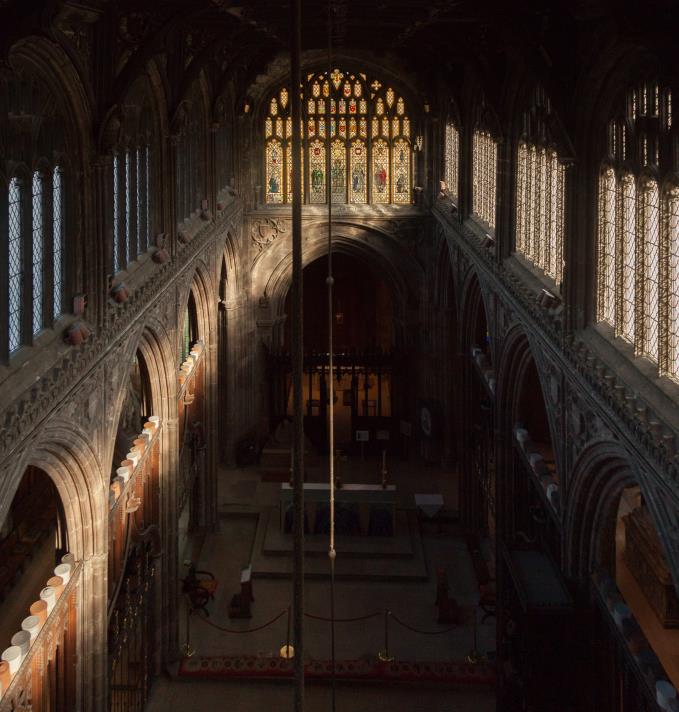 From the ceiling looking down
From the ceiling looking downThe slapstick includes a rebus. Grace Timperley in Cathedral News describes how the new photographs ‘include close-ups of the ‘Huntington Rebus’. The Rebus is a pictorial pun on the name of the warden John Huntington (1422-58) – one image depicts ‘hunting’ and the other a ‘tun’ (a barrel of ale). The wooden counterpart, which is less visible from the nave level, seems to depict an ale-keeper a little worse for wear.’
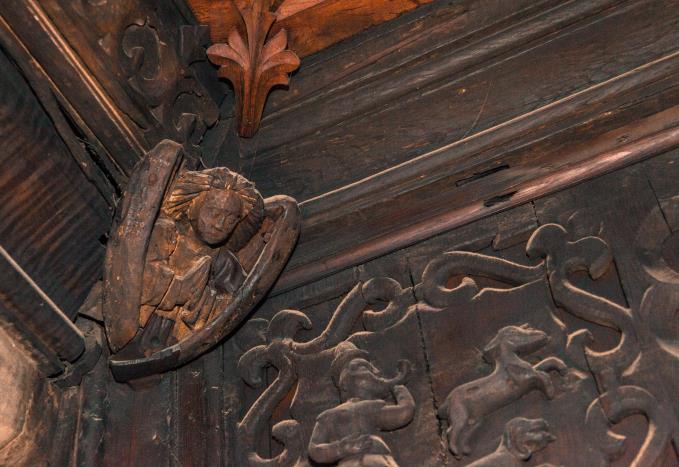 Hunting scene and an angel
Hunting scene and an angel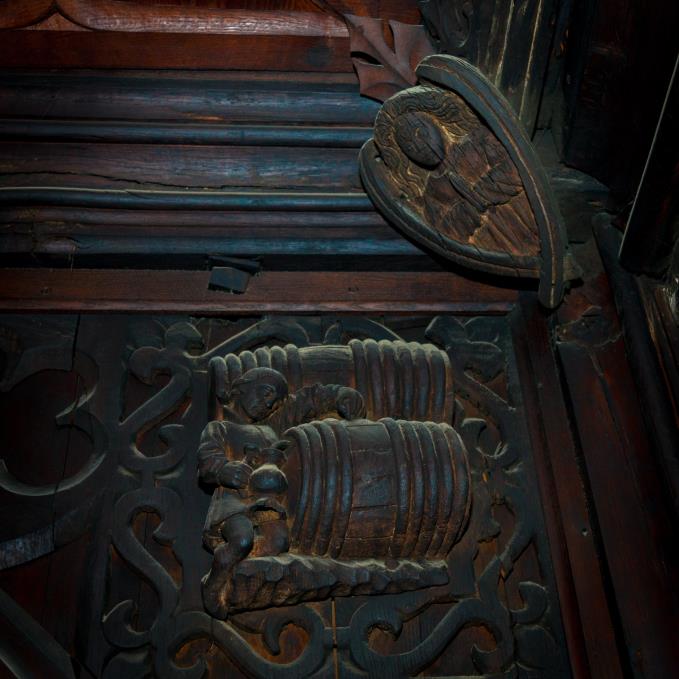 Tipsy landlord and his tuns: Is the angel jealous or reproving?
Tipsy landlord and his tuns: Is the angel jealous or reproving?There are details such as dragons chasing each other and literally chewing on their rivals. Dragons symbolised the devil and this image shows how evil consumes itself.
There is a study of a Green Man, a symbol of rebirth, new life literally bursting from his mouth, nose and eyes. Meanwhile, the naturalistic detail carved in the rose boss and the entwined leaves in several other works discovered by Watson reveal how close the artists who created these glories were to nature. One carving of a squirrel clutching its prized nut is utterly charming.
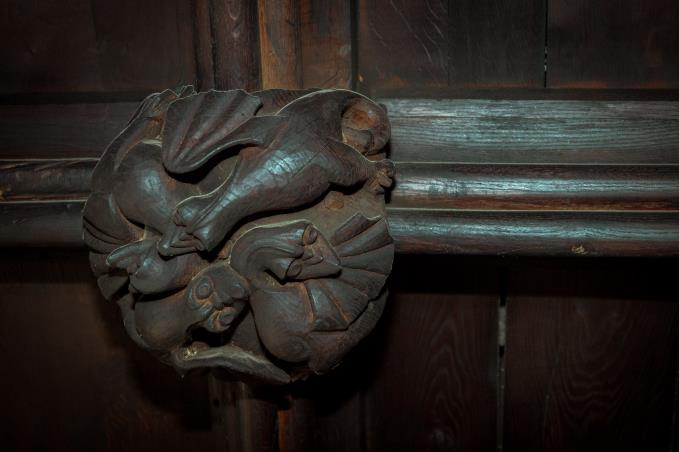 Dragons chasing each other: evil will eat itself
Dragons chasing each other: evil will eat itself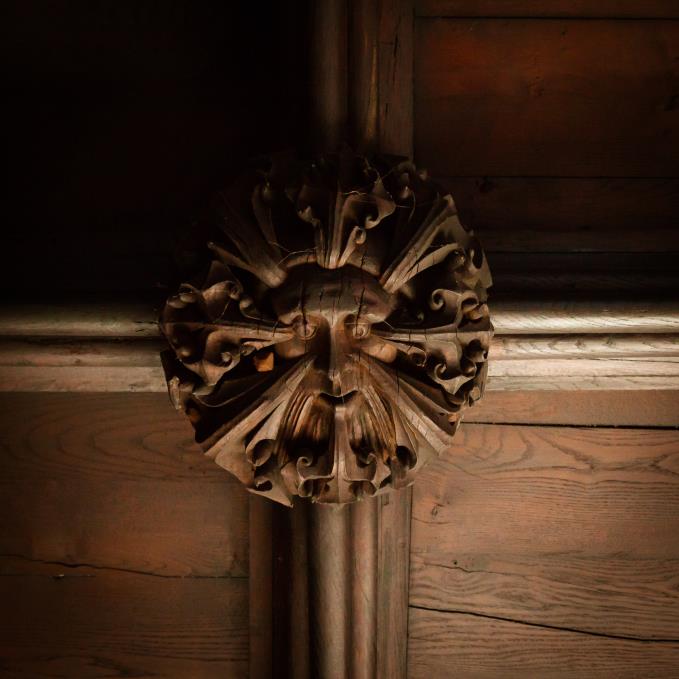 The Green Man promises renewal
The Green Man promises renewal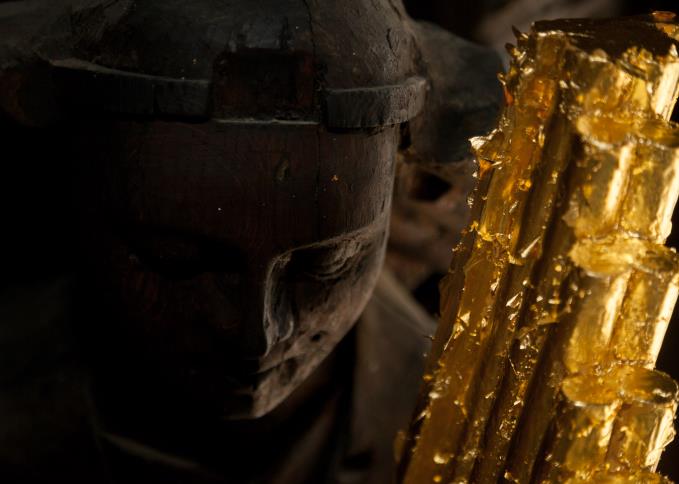 The face of an Angel
The face of an Angel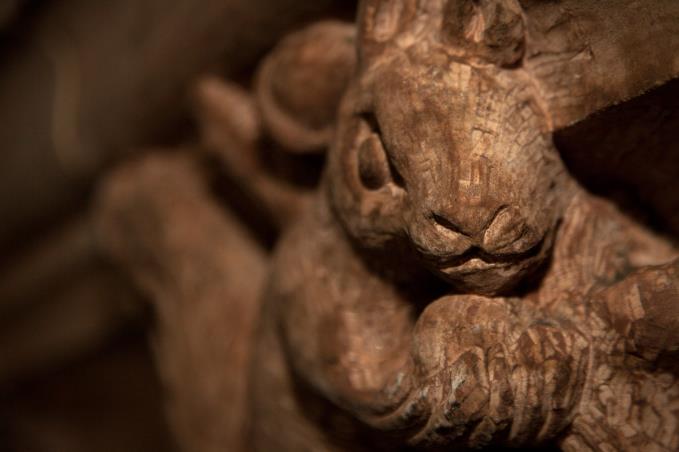 Sweet as a nut: the charming squirrel
Sweet as a nut: the charming squirrel There are suns in splendour across the ceiling, gilt studies in heavenly glory. The choir and orchestra of angels (one of the few elements that can be seen from the Cathedral floor) are here revealed in intimate detail, with contemplative faces and a luminous inner tranquility. In one of the ceiling bosses an enigmatic hand emerges from a verdant background.
The head of Christ is astounding: a sublime piece. Crowned with thorns, this Christ is not the gruesome figure seen in so many representations. His face carries the trauma and melancholy of his cruxificion but also an intensely human, rather than supernatural, concern for the world he has lived within.
 The astonishing Christ-face full of sublime power
The astonishing Christ-face full of sublime power Suns in splendour
Suns in splendour These half-a-millennium old works of art move me deeply. There is impish fun, there is joy in the sheer craft of carving flowers, angels and dragons. Remember too, these are pre-Reformation works, and thus rare having survived the iconoclasty of both Thomas Cromwell and the English Civil War.
But amongst the dust motes of the Cathedral, as the light flashes through the stained glass, I catch another echo. I catch a bond down the ages with these antique and nameless artists. I feel I can almost hear a chatter of daily life as well as discussion of the work they are doing for their God. Contemplating Robert Watson’s pictures it’s as though time bends in on itself and the essential unity of human emotion and empathy is revealed - whatever age we live in.
Under those suns, I realise that for the faithful or the humanist such as me, there is nothing new under the sun. You realise the human capacity for beauty and the human desire for meaning.
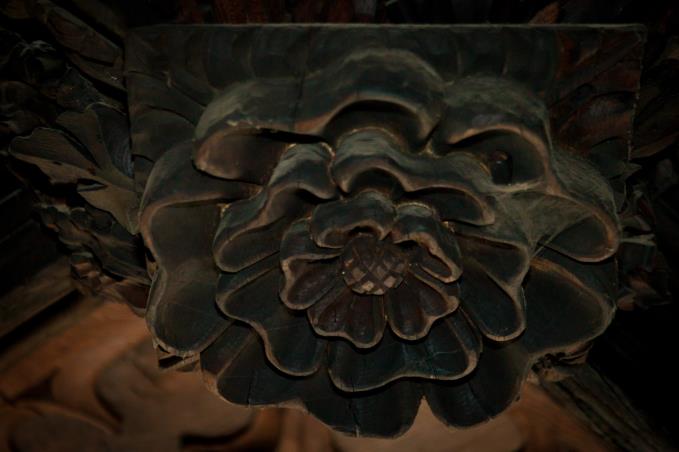 A perfect rose
A perfect rose








 Harp on high
Harp on high
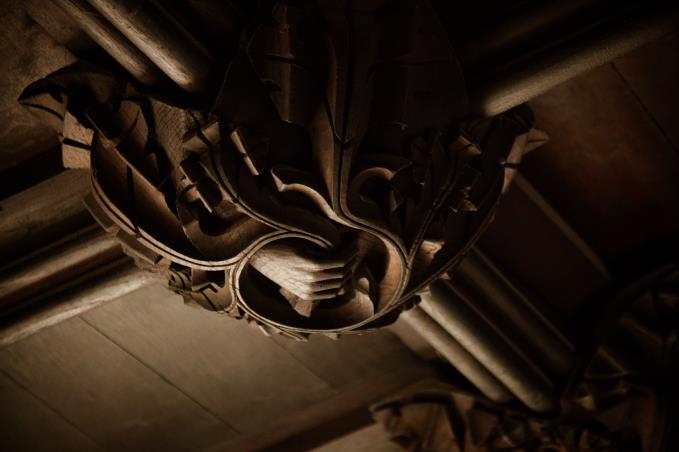 The enigmatic reaching hand
The enigmatic reaching hand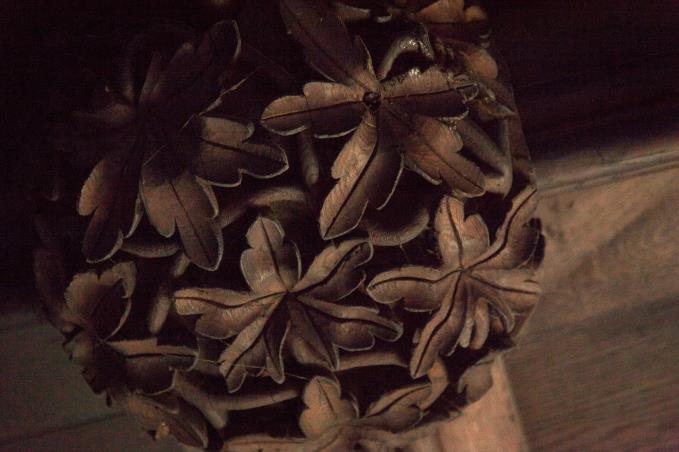 Magnificent and naturalistic carving
Magnificent and naturalistic carving


